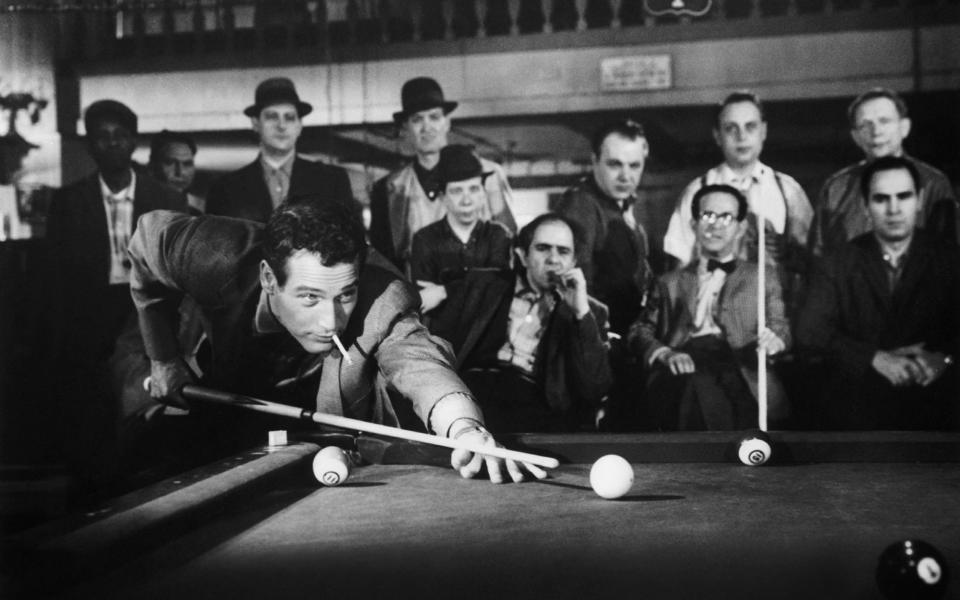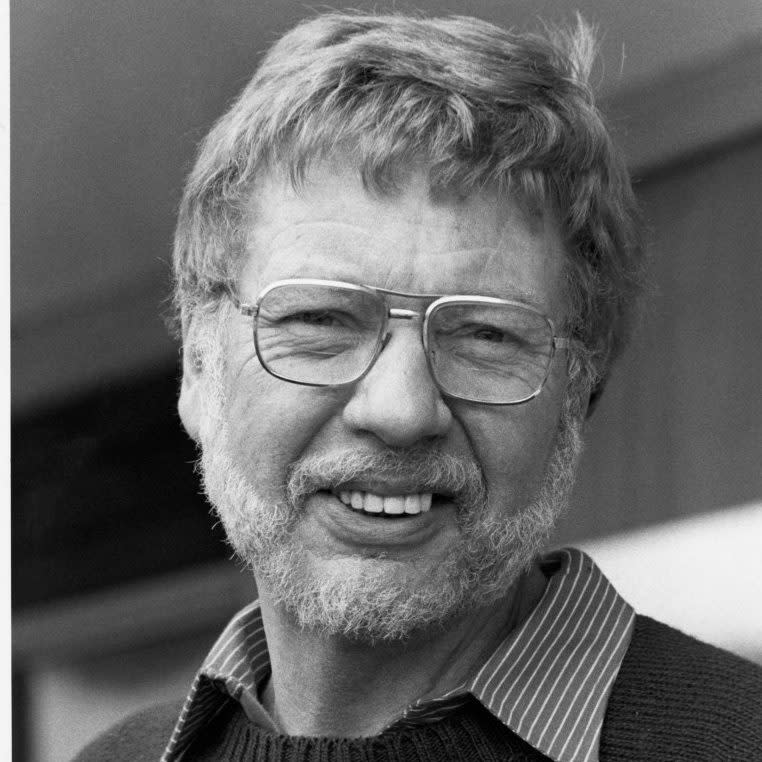Literature’s lonely alien: the troubled author behind The Queen’s Gambit

For a novelist who is far from being a household name, Walter Tevis has a wide cultural reach. I misspent much of my teens in a pool hall in High Wycombe called Fast Eddie’s - named in honour of a character invented by Tevis in his novel The Hustler. Indeed, if the film of The Hustler had not done so much to popularise a game previously associated with flea-pit dives, would the pool table be a feature of the average British pub today?
Even those who have never heard of Tevis will be aware of the films based on his books - not just The Hustler and its belated sequel The Colour of Money, but also another classic in a very different vein: Nicolas Roeg’s trippy sci-fi picture The Man Who Fell to Earth, starring David Bowie.
And now Netflix has produced a miniseries based on Tevis’s 1983 novel The Queen’s Gambit, starring Anya Taylor-Joy as a teenage chess prodigy with drug dependency issues. For a man who only published six novels Tevis has a high hit-rate for works that live on in the public consciousness, even though many fans of the films would struggle to name the original author.
Why is Tevis not better-known? One answer is that after publishing his first two novels, The Hustler (1959) and The Man Who Fell to Earth (1963), there was a long silence for the best part of two decades as he failed to capitalise on the success of the two films. Then there came a new burst of creativity in the 1980s, with Tevis virtually establishing his reputation again from scratch with four novels published in rapid succession. But this second opportunity to build up the wide public he deserved was cut short: he died of lung cancer in August 1984, aged 56.
The reason for the huge hiatus in Tevis’s output can be summed up in one word: alcohol. It was kicking the booze in the late 1970s that enabled him to start writing again.
But it wouldn’t be quite true to say that alcohol addiction wrecked his career. What links such disparate characters as the self-destructive pool hustler “Fast Eddie” Felson, the lonely alien Thomas Jerome Newton and the steely young chess player Beth Harmon is the way in which Tevis drew on his own demons and battles to create them. If he hadn’t been an addict he might have written many more books, but it seems unlikely that his output would have been so powerful.
Walter Stone Tevis was born in San Francisco on February 28 1928. When he was 10 he contracted rheumatic fever and was more or less bed-ridden for nine months at a convalescent home on the campus of Stanford University; the medical staff ensured his compliance in this quiet regimen by dosing him with phenobarbital three times a day.
Walter’s family were not there to help him through this period: his father had been badly affected by the Depression and decided to head back to his home state of Kentucky in pursuit of work, taking Walter’s mother and sister with him. Eventually Walter was well enough to join them in Lexington, travelling across the US by train alone.
As a teenager Walter would go with his best friend Toby to watch the pool pros playing for big money - “in the days before pool halls were respectable”, as Walter’s first wife Jamie put it in her memoir of her husband - and then try to replicate the shots they had seen on Toby’s father’s pool table. Eventually they felt they were skilful enough to head to the small towns around Lexington and attempt, as a pair of green-looking schoolboys, to hustle the veteran pool players.

At the same time he was also becoming hooked on chess. “I think that most people take up the game of chess in a very serious way if they have personality problems ... I was afraid of girls, I was afraid of a lot of things, and chess was a way of … getting rid of some of that anxiety by displacing it in something that was relatively safe,” he recalled in 1983.
On his 17th birthday in 1945 he joined the Navy as a carpenter’s mate, serving in South America. He went on to study at the University of Kentucky on the GI Bill and later worked as a teacher in various Kentucky schools. His fellow teacher Jamie Griggs would later recall the occasion on which a “tall, lean, blonde fellow, wearing an ill-fitting jacket, frayed pants, pulling on a cigarette and waving it in the air, introduced himself”; they married in 1957.
Walter’s teaching work was sporadic, however, and when Jamie became pregnant they were forced to move in with her parents. Walter’s claims that he would support the family through writing were hardly reassuring, but in the event he sold a short story based on his days in the pool halls, and his agent suggested he expand it into a novel.
Tevis always maintained that The Hustler exaggerated the insalubrious nature of the world of pool sharking. “Much of the pool-room scene as it appears in The Hustler was made up by me and was not the way that pool rooms really looked. But pool rooms have come to resemble The Hustler since,” he told the radio interviewer Richard Wolinsky. “In fact, I’ve heard that at least two pool hustlers have had their thumbs broken since The Hustler was written. You know, that never happened [in real life].”
The storyline in which Fast Eddie has his thumbs broken and reluctantly becomes dependent on his lady friend Sarah was inspired by childhood memories: “Sarah … maybe at depth is really my mother who presided over me in a kind of ghoulish way during my illness when I was a kid”.
Nothing infuriated Tevis more than pool players claiming to be the “original” Fast Eddie or to have inspired the novel’s master hustler Minnesota Fats. One hustler called New York Fats changed his name to Minnesota and maintained for years that the character was based on him, to the extent that Tevis considered suing him. “A lot of people ask me, ‘When did you first meet Minnesota Fats?’ And I feel like Walt Disney being asked, ‘When did you meet Donald Duck?’” he said. “I'm weary of explaining this. Nobody believes you when you keep telling them you invent your own characters.”
The success of the novel, and the 1961 film version starring Paul Newman, enabled Tevis and his family to move into lodgings; he had a day job writing copy for the Kentucky Highway Department, and would write fiction at night, placing the typewriter on the bed so that the muffled noise would not disturb the landlady. He wrote several science fiction stories and in 1963 published The Man Who Fell to Earth.

The novel is about an alien who comes to Earth to find a way of saving the population of his home planet, which has been ravaged by nuclear war. Lonely and depressed, he falls prey to the human weakness of alcoholism, which helps him to understand humans more but contributes to the failure of his mission. The writer James Sallis has called the book “the wisest, truest representation of alcoholism ever written”.
According to his wife, Tevis had started drinking seriously while staying at a writers’ colony in Mexico, where the residents “were fashioning themselves after Hemingway - crew neck sweaters, lots of late-night talk, and heavy drinking.” It’s hard not to imagine, however, that his alcoholism had its roots in the sufferings and heavy druggings he endured in his childhood.
Tevis admitted that he sobered up after eight months of heavy drinking to write the book. It was, he said, a “disguised autobiography”, that drew on more than just his incipient alcoholism: “It is based upon my own feelings from time to time that I’m from another planet. Feelings … which I’ve tried to negate within myself with booze over a large number of years … It has to do with my having moved from what I thought was the City of Light, San Francisco, when I was eleven to the other side of the track - Lexington, Kentucky, where I went to a tough Appalachian school in the fifth grade and was beaten up regularly.”

He identifies with his alien, Thomas Jerome Newton: “the sense of his awkward movement and the pain of moving around, which I had felt as a child so much after that convalescence, and his feeling generally of goodwill toward people, but being afraid of them.”
The alien in the book was tall and gangly like Tevis (his students used to nickname him “Ichabod Crane” in reference to the gawky character in The Legend of Sleepy Hollow), and he thought Bowie was superbly cast in the film (which he otherwise thought somewhat pretentious).
The success of his two novels secured Tevis a job lecturing in creative writing at Ohio University, where he worked for 13 years and became a much-loved teacher, if not one noted for his efficiency. But all the time he was drinking, and writing nothing: “He could drink and teach, but he could not drink and write … One drink and the typewriter was completely out of the question,” recalled his wife.
Eventually Tevis went to Alcoholics Anonymous to sober up, and convinced himself that he could only push himself to write again if he moved to New York and gave up everything that impeded his writing or offered him an alternative form of security: his job, his friends, his wife and children.
It worked. He produced an excellent sci-fi novel called Mockingbird (1980) set in a future in which human beings have forgotten how to read - the idea came, he said, from the alarming decline in literacy he had witnessed in his many years as a teacher.
The book begins with a hilariously tragicomic scene in which the Dean of New York University, a centuries-old android called Spofforth, makes one of his periodic and unsuccessful attempts at suicide - “I was writing out of my own suicide attempt - I had a couple of them,” Tevis recalled.

The novel’s hero is a human character called Paul Bentley who rediscovers the joy of life through learning to read while his fellow human beings are numbed by television. He represents the way in which Tevis had rediscovered his zest for life (“I feel a hell of a lot better about living. I like the fact that the grass is green. I really am pleased with that in a way that I didn’t used to be”) after giving up the booze. “What I am convinced of is that it is very bad for people to find substitutes for living their lives," he said. "And that’s what I hope I do say, and say well, from time to time in the book.”
Mockingbird was quickly followed by The Steps of the Sun, another sci-fi novel, and then The Queen’s Gambit. Tevis had once witnessed a pool tournament at which a teenage girl had beaten all the old hands, but having already written about pool he decided to put her in a novel about his other passion, chess.
In the young Beth Harmon, Tevis created a character who was supremely confident in her abilities (“She heard someone whisper, ‘Thirteen f______ years old,’ and immediately the thought came into her mind, along with the exultant feeling the whispered voice had given her: I could have done this at eight”) but ultimately uses chess as a way of escape from the messiness of real life, just as the young Walter did. In giving Beth a childhood illness like his own that leads to drug dependency, Tevis mined his memories: “Writing about her was purgative. There was some pain - I did a lot of dreaming while writing that part of the story.”
Part of the brilliance of the novel lies in Tevis’s ability to make chess seem as exciting as pool, although he maintained that that was a reflection of real life: “there's been more competitive excitement, more aggressiveness crackling around that dumb little high school gymnasium or third rate hotel ballroom, in which chess tournaments are being played, than I have seen in any other kind of activity,” he told one interviewer.
He admitted that the character of Beth was partly inspired by Bobby Fischer, whom he admired for “his overwhelming arrogance at the board, and his ability to stare down almost anybody” - something that anybody who has seen Anya Taylor-Joy’s blood-freezing stare in the Netflix series will agree has been captured well.

Finally there came Tevis’s last book, The Colour of Money - a sequel to The Hustler. Before it was published Martin Scorsese invited Tevis to write a screenplay that would see Paul Newman reprise the role of Fast Eddie, alongside Tom Cruise. But Tevis’s screenplay demanded far more knowledge of and emotional investment in the previous film than an audience of teen Tom Cruise fans would have had, and Scorsese hired a different screenwriter, resulting in a so-so film that bears no relation to Tevis’s novel of the same name.
In Tevis’s book Fast Eddie, like his creator, has wasted a large portion of his life trying to avoid doing what he’s best at, running a pool hall but not playing: “I went out to the poolroom every morning and brushed down the tables and put out fresh chalk and after a while I was 50 years old”. But under the tutelage of his old adversary Minnesota Fats, he embarks on a comeback. “You sat on your talent for 20 years,” one character tells him, to which he responds, “I’m not sitting on it now”.
Tevis’s own comeback, impressive though it was, was short-lived; he died a week after The Colour of Money was published. He had married again, and as he was dying his second wife read him a card from his estranged first wife and family: “Your children are populating southeastern Ohio with beautiful grandchildren. We love you very much.” At his funeral old colleagues and students lined up to remember him as “brilliant - lazy - erratic” and “interestingly different”.
We must hope that the new version of The Queen’s Gambit renews interest in his interestingly different work. A film or miniseries of Mockingbird would be welcome - but we don’t have to wait for that to come along to rediscover his books, superb entertainments that drew on real suffering and which we must hope their creator regarded as some compensation


